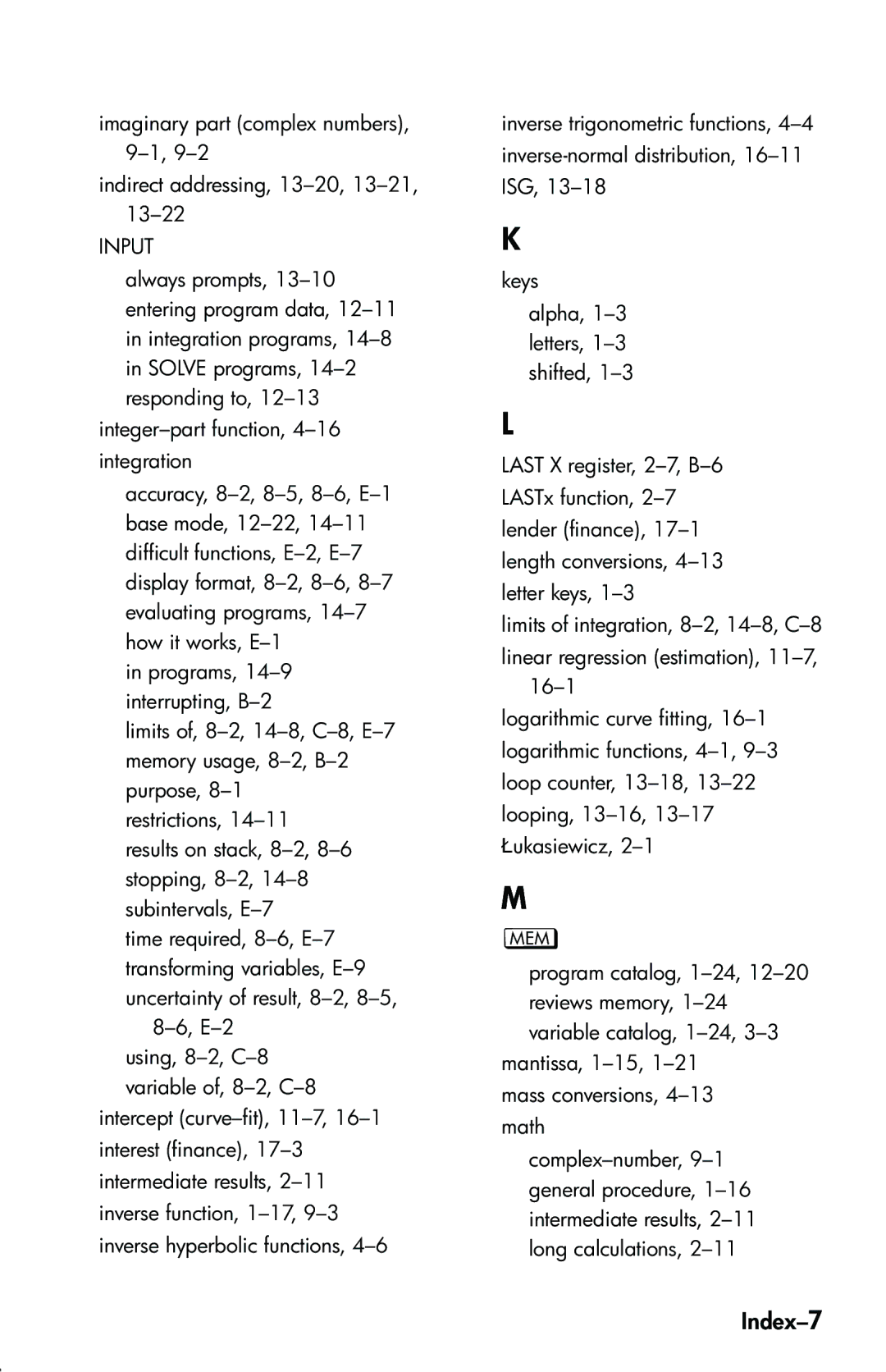imaginary part (complex numbers),
indirect addressing,
INPUT
always prompts,
accuracy,
in programs,
limits of,
restrictions,
results on stack,
time required,
intercept
inverse trigonometric functions,
K
keys
alpha,
L
LAST X register,
limits of integration,
logarithmic curve fitting,
M
Y
program catalog,
mantissa,
